

Ben Zachariah
CarExpert's top five ute reviews of 2025
2 Days Ago
Mazda's new top-spec BT-50 maintains its rugged capabilities but gains some extra luxury. Is it SP-ecial enough to sway buyers from a Ranger?
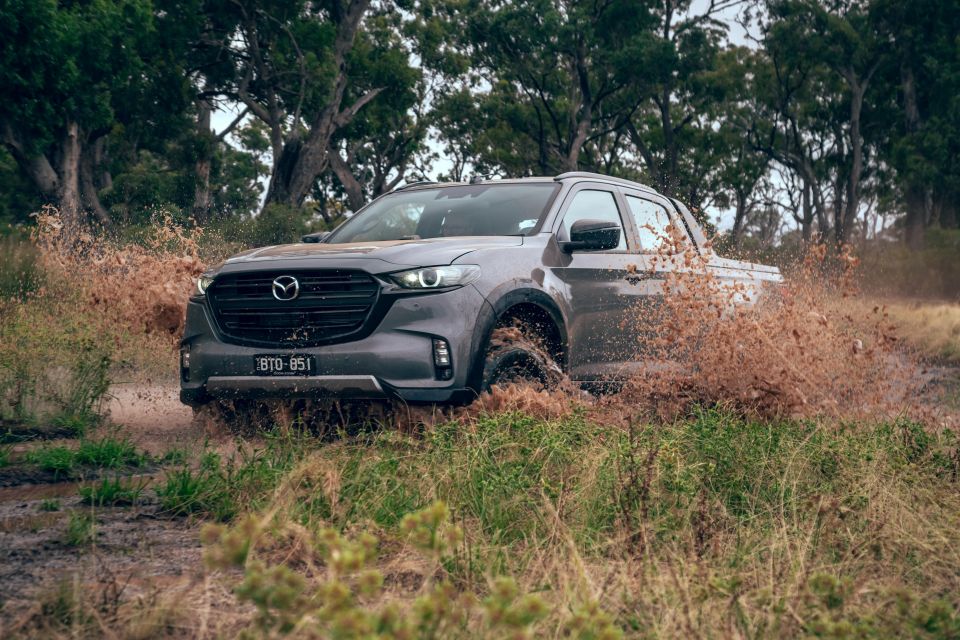
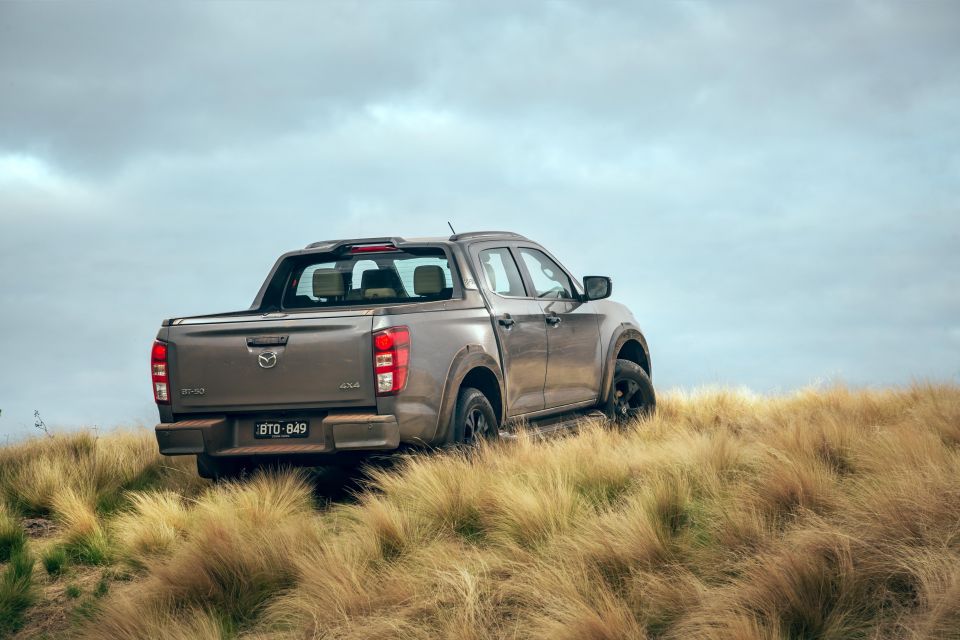

Quickly see how this car stacks up against its competition. Select any benchmark to see more details.
Where expert car reviews meet expert car buying – CarExpert gives you trusted advice, personalised service and real savings on your next new car.
The Mazda BT-50 may not be quite as popular as the top-selling Toyota HiLux and Ford Ranger, but it’s making steady progress up the sales charts in its latest iteration.
Part of that is down to the recent overhaul, which saw the old Ford Ranger drivetrain and chassis swapped out for that of the latest Isuzu D-Max, as well as a complete redesign that brings it in line with Mazda’s other models.
In 2021, the BT-50 set an all-time sales record in Australia, with 15,662 units sold across 4×2 and 4×4 ranges. Growth of 77.8 per cent was achieved by the BT-50 4×4 (12,786 units), and 20.1 per cent for the BT-50 4×2.

Even though Mazda Australia anticipated growth for its revamped utility, the latest models have exceeded even the local arm’s expectations.
Fast forward to 2022 and Mazda is looking to broaden the BT-50’s appeal, adding new variants at the top and bottom of the line-up. Here we’re looking at the new pseudo-flagship, the 2022 Mazda BT-50 SP.
While it slots between the BT-50 GT and BT-50 Thunder in the local line-up, the SP differs from the Thunder in that it’s a factory-produced model, not a locally-fitted accessories package. Think of it as Mazda’s rival to the ever-popular Ranger Wildtrak and D-Max X-Terrain.
Can this new variant can hold its own in one of Australia’s most competitive new vehicle segments?
Pricing for the 2022 Mazda BT-50 SP kicks off at $62,990 before on-roads with the standard six-speed manual and $65,990 before on-roads with the optional six-speed automatic. Both versions come with selectable four-wheel drive as standard.
That’s a $6000 increase on the BT-50 GT, and $3000 less than the flagship BT-50 Thunder, at least based on retail pricing. Mazda Australia is, however, advertising national drive-away pricing of $63,990 for the manual and $66,990 for the automatic, which closes the gap between GT and SP to around $2500.
With respect to rivals, the BT-50 SP is in the firing line of well-known rivals including the Ford Ranger Wildtrak Double Cab Bi-Turbo ($66,090), Isuzu D-Max X-Terrain ($62,990 D/A), Nissan Navara PRO-4X (from $58,130) and the Toyota HiLux SR5 Double Cab (from $58,680).
MORE: 2022 Mazda BT-50 price and specs
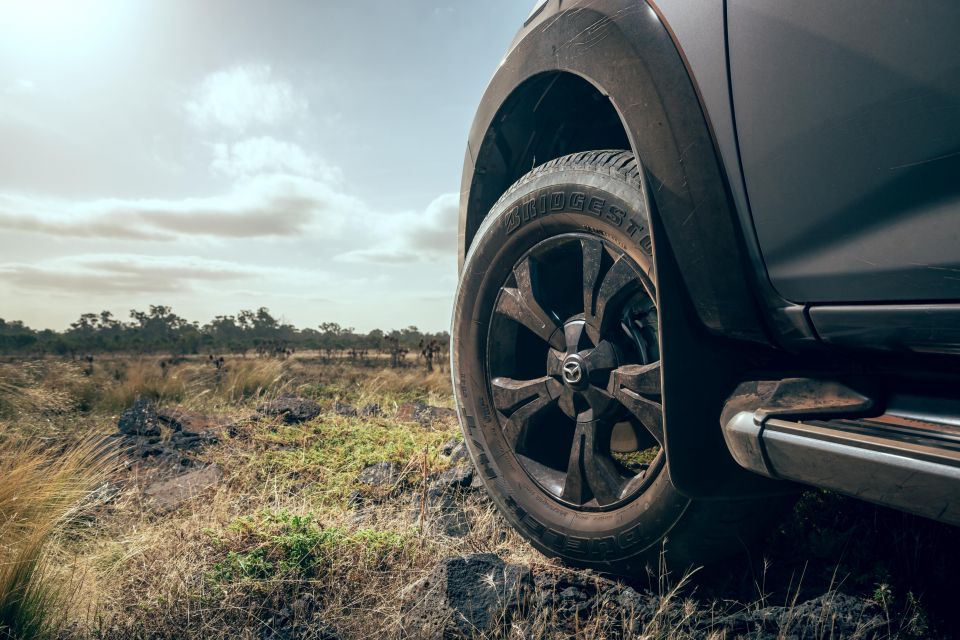
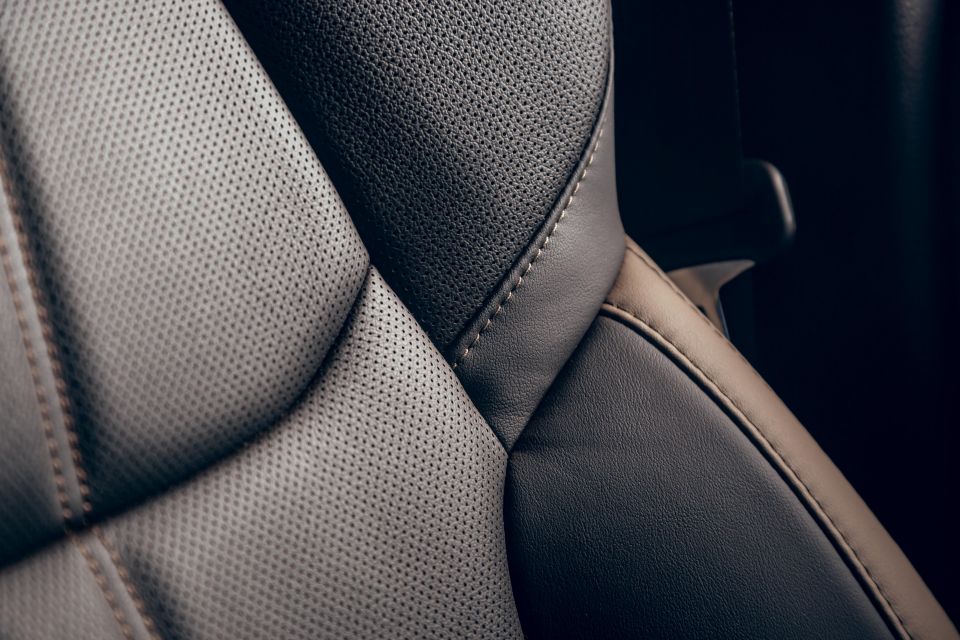
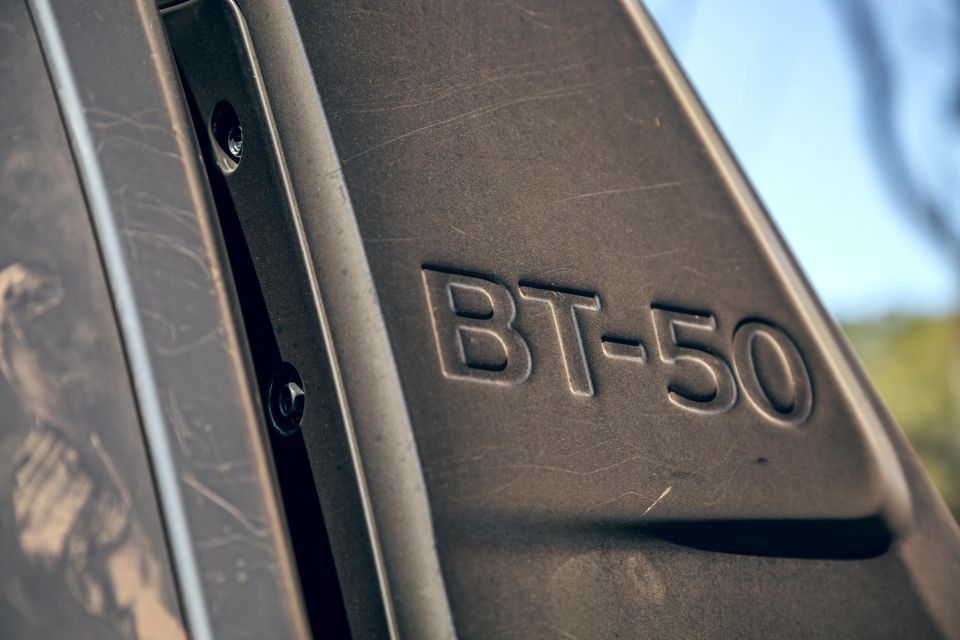
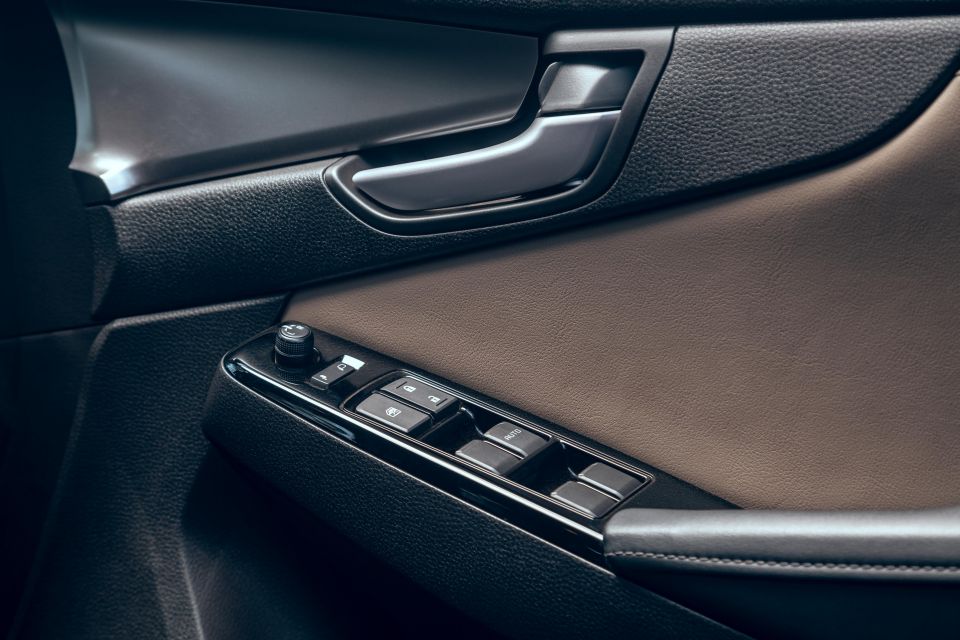
Buy your new car without the stress. It's fast, simple and completely free.

Great service from Travis and team, second time I have used this business would not hesitate to recommend them to anyone
Craig C.
Purchased a Ford Ranger in Sunshine Coast, QLD
CarExpert helped Craig save thousands on his Ford Ranger, now let us save you on your next new car.
Find a dealHighlights in the MazdaBT-50 SP include:
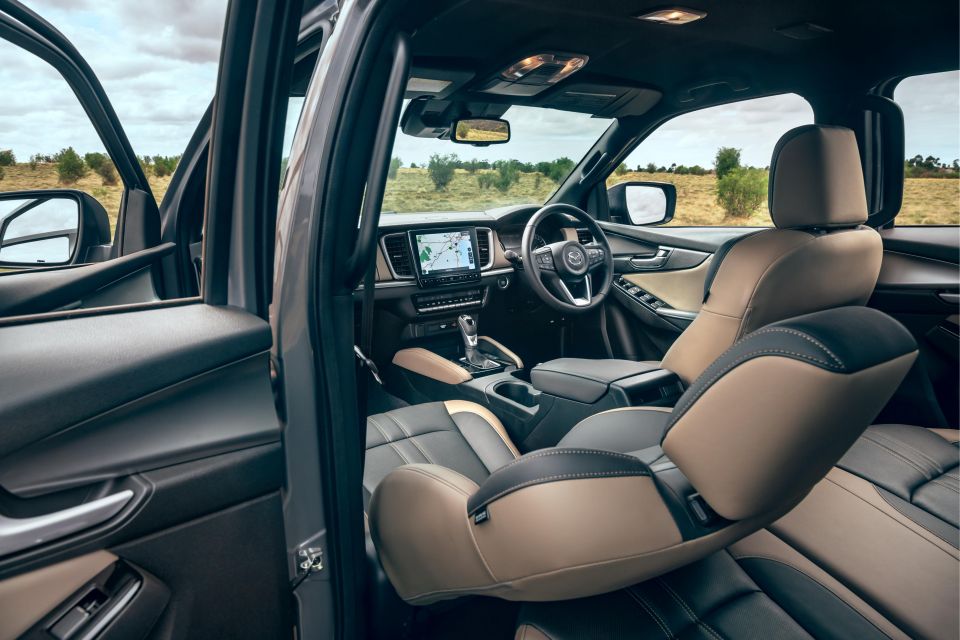
That’s on top of standard features from lower grades, including:
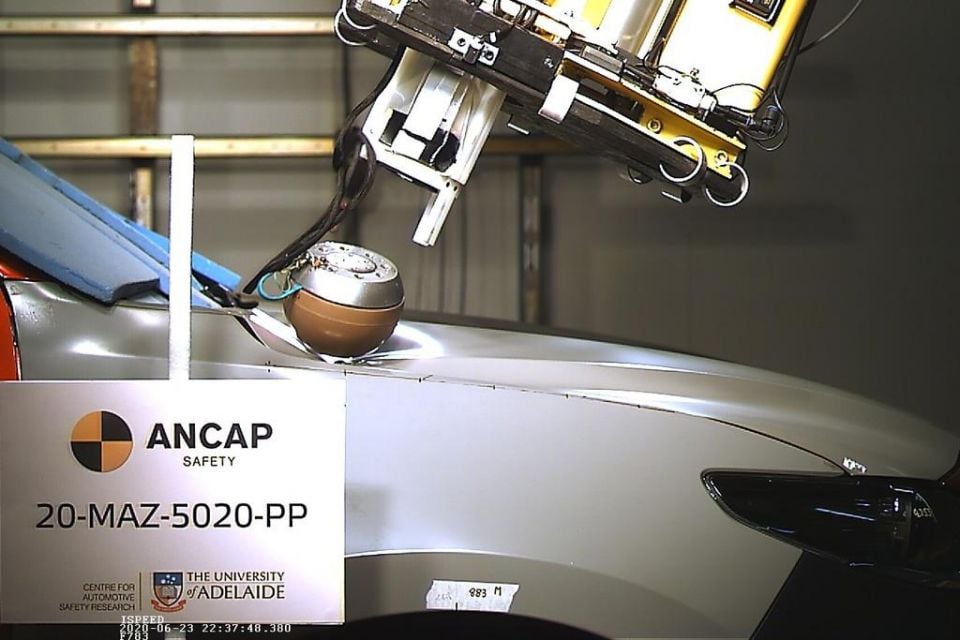
The BT-50 wears a five-star ANCAP safety rating with 2020 date stamp, based on tests conducted on the related Isuzu D-Max. This rating applies to all variants bar the BT-50 Thunder.
Against 2020 criteria, category scores included 83 per cent for adult occupant protection, 89 per cent for child occupant protection, 67 per cent for vulnerable road user protection and 84 per cent for safety assist.
It’s worth noting the BT-50’s unique front end compared to its Isuzu twin garnered a slightly weaker pedestrian protection score (from 69 per cent).

All Mazda BT-50 models come standard with:
** Automatic models only
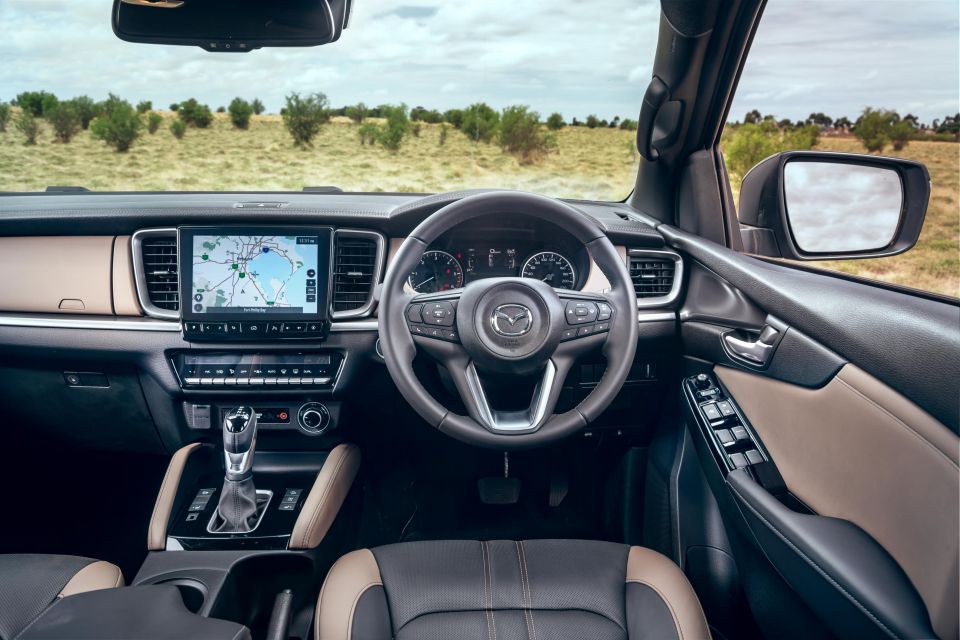
We’ve spent a bit of time in the cabin of the BT-50, and the SP introduces a new colour scheme… but not much else.
The Black and Driftwood finish may not be to all tastes, but it certainly livens up the interior. It comes with Driftwood accents in the door panels, leg rests and the upper glovebox lid.
As we’ve noted previously, the BT-50 has one of the more upmarket cabins in the dual-cab ute segment. The soft-touch dash trim is a nice touch, and the switchgear and touch points all feel solid and hard-wearing.
Remember this is a dual-cab ute with workhorse DNA, so we can’t expect Lexus levels of interior tactility, but it’s nice to see companies like Mazda are stepping it up as more family buyers move into lifestyle utes.
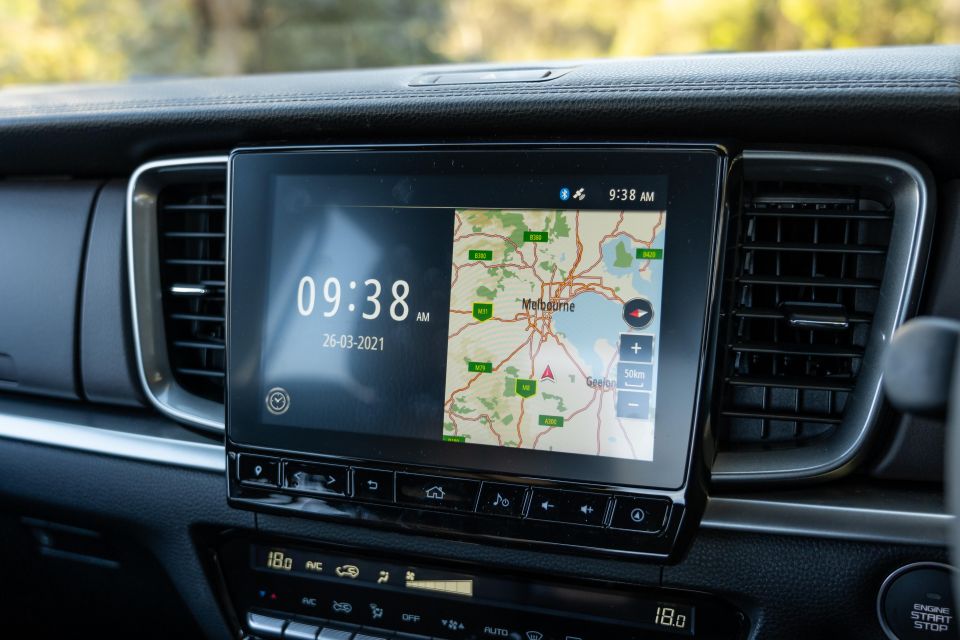
The front seats are comfortable, with the driver treated to electric adjustment, and the steering column adjusts for reach and rake. Both offer a wide range of adjustment meaning you should be able to get comfortable whether you’re tall or small – plus there’s heated seats for those chilly winter mornings.
Ergonomically it’s pretty sound too, with all the switchgear logically laid out and within the driver’s reach.
Infotainment isn’t Mazda Connect or MZD Connect like you’ll find elsewhere in the company’s line-up. Instead, the BT-50 runs the Isuzu D-Max’s infotainment system on the same 9.0-inch touchscreen.
As we’ve found in its Isuzu twin, the system can take a bit of time to load up and connect to your phone (via wireless Apple CarPlay for iPhone users), but once it’s up and running it does the job well – though not as well as Ford Sync 3.
Space and storage up front is good. There’s a feeling of width and airiness to the first row, and like in the D-Max you get a shelf under the dashboard for your phone, a dual-tier glovebox, cupholders, a decent centre console bin under the armrest, and bottle holders in the doors.

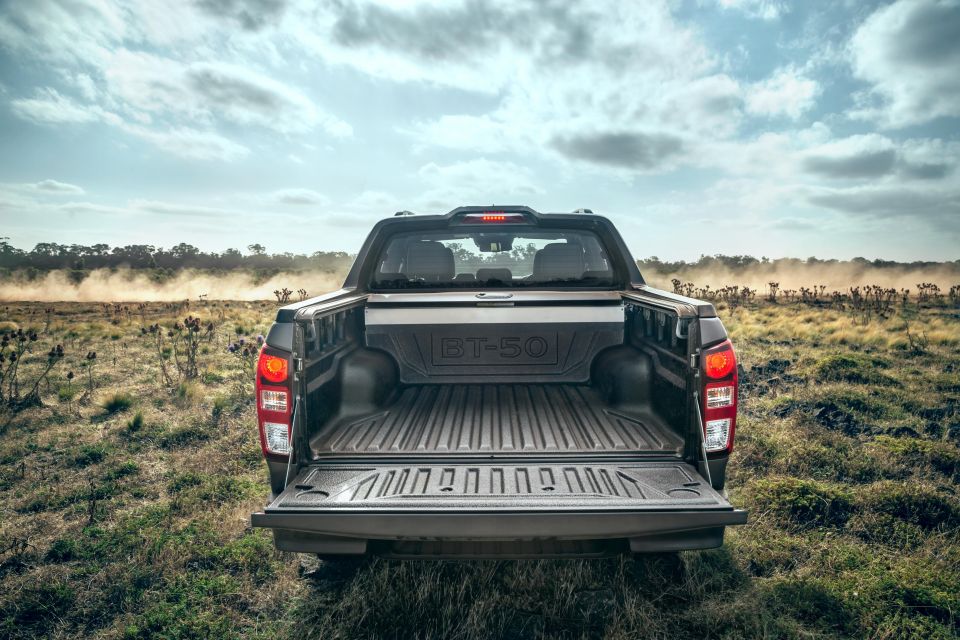
The second row offers ample room for two adults, with good head- and legroom for my own 6’1 stature. There’s air vents and USB charging back there, as well as grab handles on the B-pillars.
If you have children, there’s ISOFIX anchors on the outboard positions as well as top-tether points.
In the back, you get a tray with standard tub liner in the BT-50 SP, measuring 1571mm long, 1530mm wide(1120mm between the wheel arches), and 490mm deep. The load height is 833mm off the ground.
SP models also get a manually-operated roller tonneau cover for the tray, and the lockable centre tailgate release is trimmed in gloss black.
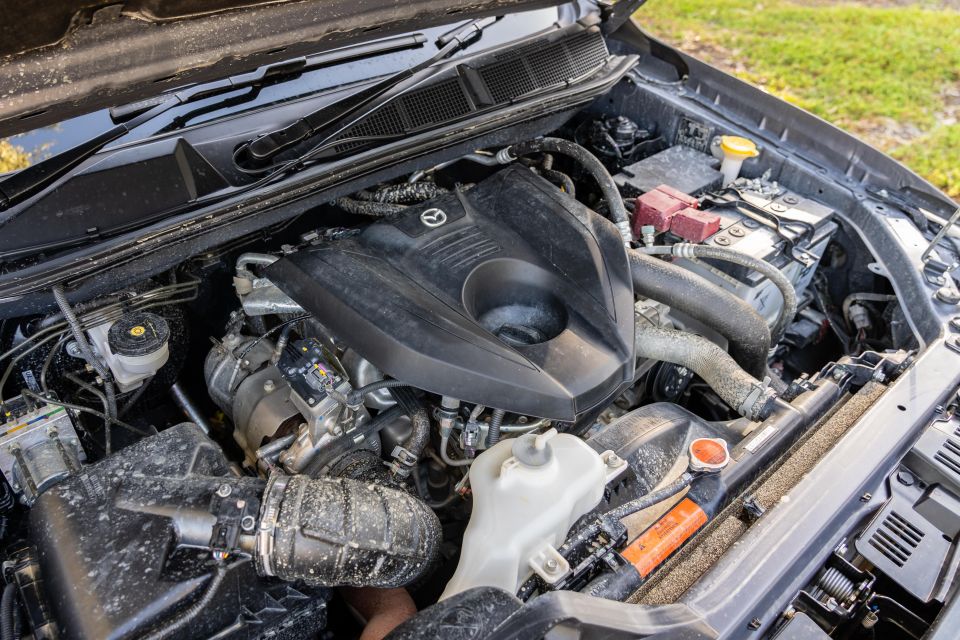
BT-50 SP variants are powered by a 3.0-litre four-cylinder turbo-diesel shared with its D-Max platform mate. Outputs are rated at 140kW (3600rpm) and 450Nm (1600-2600rpm).
Drive is sent through a selectable 4×4 system that defaults to rear-wheel drive, through the optional six-speed automatic. A six-speed manual is the standard shifter.
Four-wheel drive models feature 2H, 4H, and 4L options plus a locking rear differential.
The BT-50 has a quoted braked towing capacity of 3500 kilograms, with a tow ball download maximum of 350kg. In SP guise, Mazda quotes a payload of 902kg/892kg (6MT/6AT), and a Gross Vehicle Mass (GVM) of 3100kg. Kerb weight is listed as 2198kg for the manual and 2208kg for the auto.
Automatic 4×4 versions of the BT-50 use a claimed 8.0L/100km on the combined cycle, while the fuel tank measures 76 litres. Our off-road drive and regional highway drive route mean our fuel readouts weren’t indicative of real-world use.
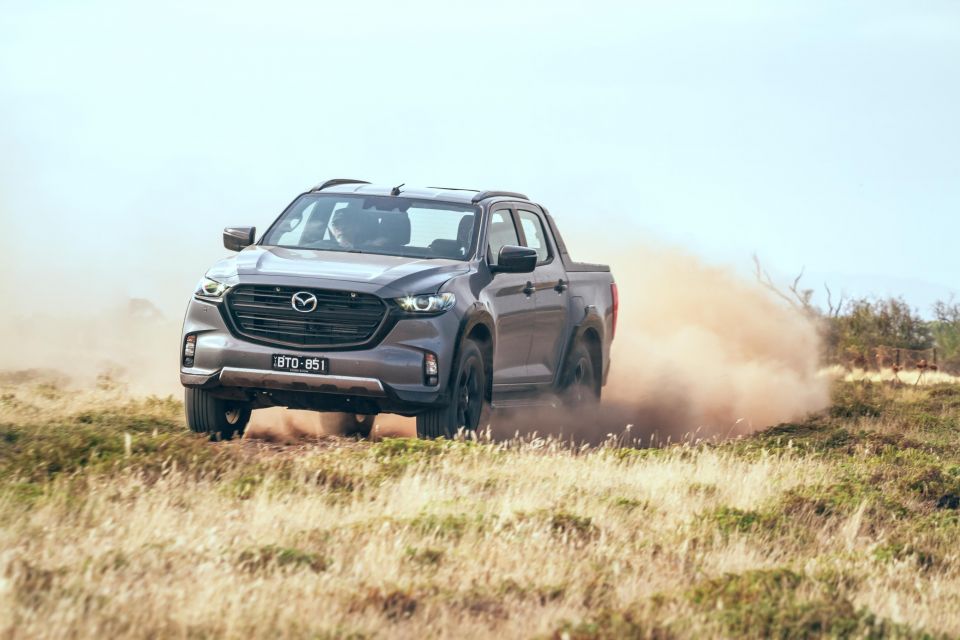
The BT-50 SP media drive took place west of Melbourne, starting in Eynesbury for the on-road portion and into the Lerderderg State Park for some 4×4 action.
We know already how the dual-cab BT-50 performs on the tarmac. The 3.0-litre diesel is pretty effortless, refinement at a cruise is up there with the best, and the ride is generally well-sorted – if a bit sharp at the rear, which is a common complaint across most dual-cab utes.
Most of the BT-50 SPs on the media drive fleet were accessorised with rubber mats and a tow kit, but I managed to get behind the wheel of the sole vehicle on test with a snorkel and suspension upgrade kit.
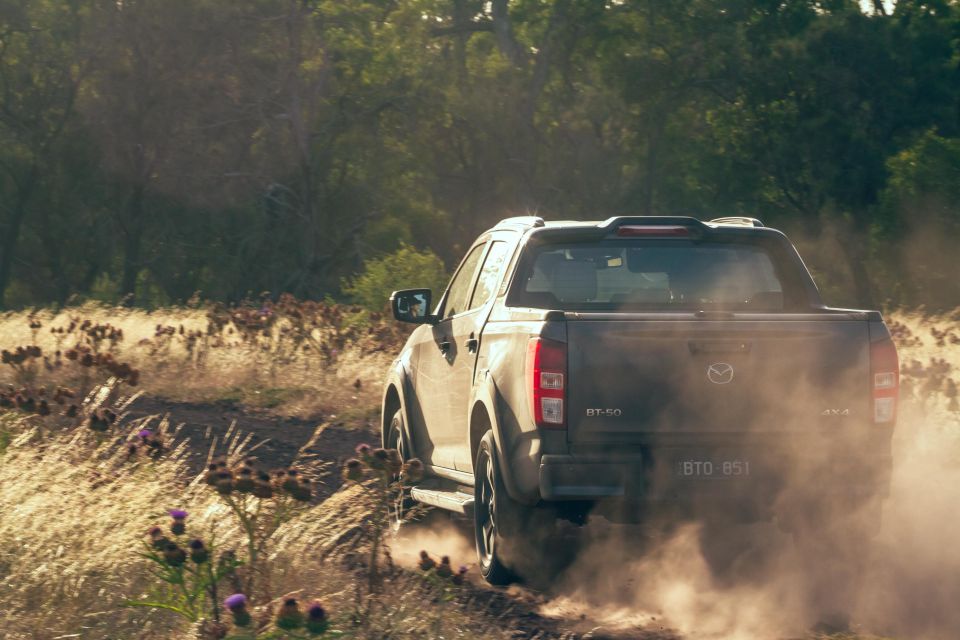
We’ll focus on the latter, which retails for around $6700 depending on whether you go for the standard ‘medium load’ (0-300kg) or ‘heavy duty’ (300-600kg) options. The locally-developed accessory features ARB BP51 dampers which can be adjusted for rebound and compression to optimise the BT-50’s ride and handling.
Further, you can adjust the spring preload/ride height. Our test vehicle was roughly 25mm higher than stock. According to Mazda, owners can used the supplied toolkit and instructions manual to make adjustments themselves, or head to their dealer.
The vehicle on test had been tuned for maximum unladen comfort, and boy did it make a difference on rough and lumpy country highways, as well as even rougher gravel roads and off-road trails.
It’s most noticeable on the road, where the BT-50 irons out imperfections and sharper hits with SUV-like finesse. The rear end was well-sorted in particular, and a reference drive in a standard SP demonstrated the marked improvement in ride comfort and refinement.

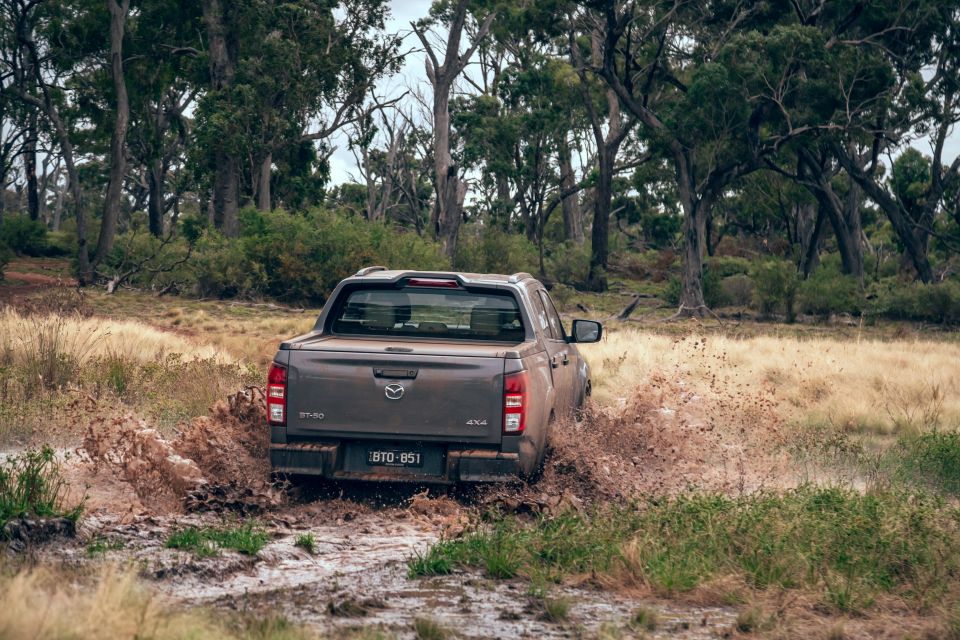
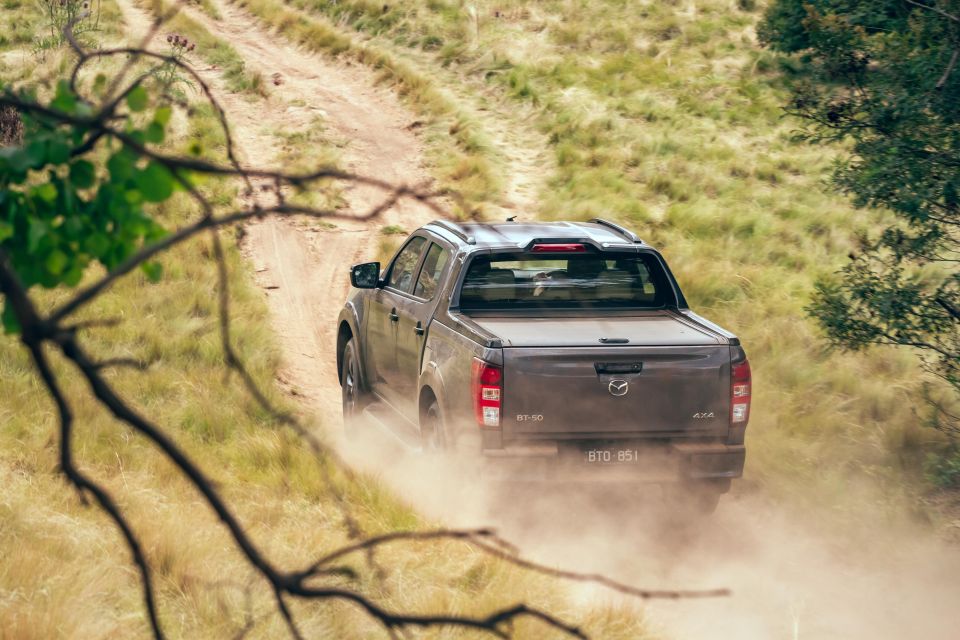
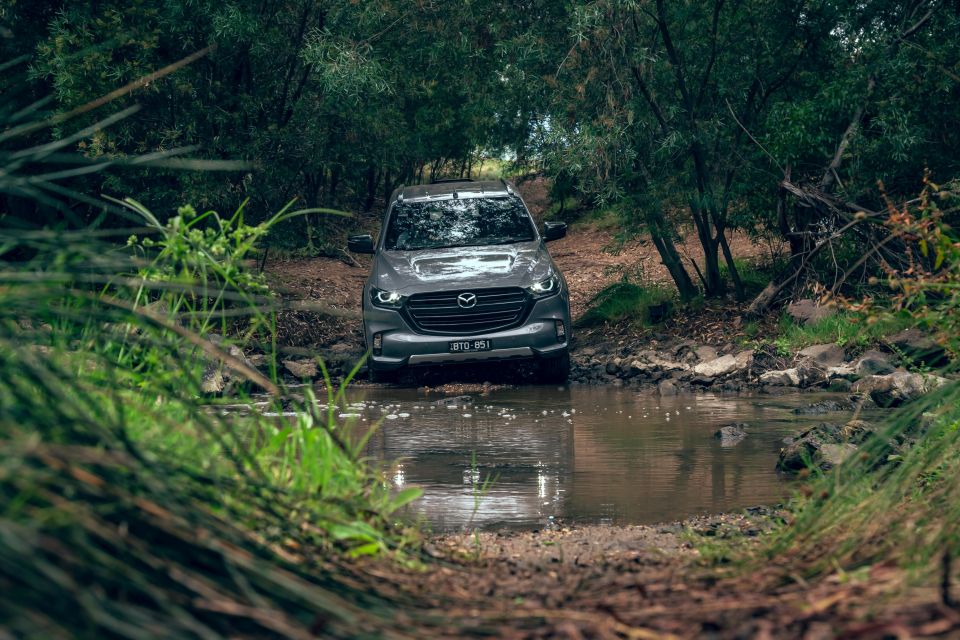
Road holding and stability inspires confidence regardless of the terrain, with the BT-50 SP striking a balance between a commanding drive position with a planted feel on road – or whatever surface you’re on.
Insulation from road and wind noise is impressive, and it’s clear why so many Australian buyers are turning to utes to go on long road trips and camping adventures. Newer dual cabs like the BT-50 genuinely offer great refinement on the open road.
The dynamics are fine for the class, with that lofty driving position translating into a tall feel when navigating bends. Given the 240mm ground clearance you can’t expect MX-5 dynamics, but the BT-50 is fairly neutral and predictable in how it handles.
At the Lerderderg State Park we tackled some rougher stuff including dirt trails, rocky climbs and descents, as well as some shallow water crossings. There was a 4×4 playground area at the top as well, which was quite a bit of fun.
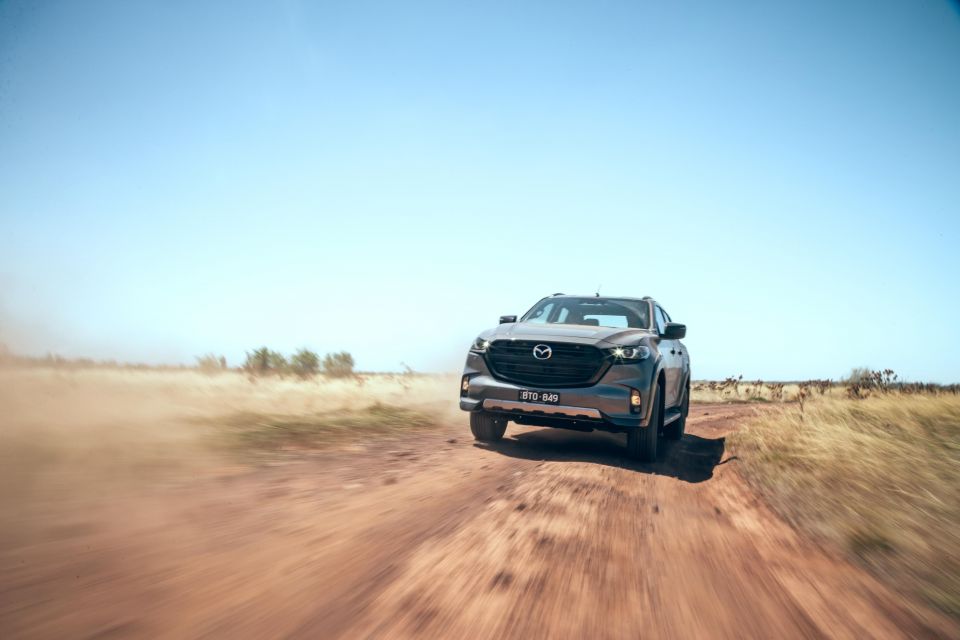
Where expert car reviews meet expert car buying – CarExpert gives you trusted advice, personalised service and real savings on your next new car.
The BT-50 could deal with most scenarios in 4H, though engaging low-range and at times the diff lock just made it that much easier. Considering the SP is running highway tyres, the grip on hand is impressive.
As a fairly inexperienced off-roader, it was quite comforting the BT-50 made it so easy to jump in and just go.
Off-road specs include a 27-degree approach angle, a 24.2-degree departure angle and a 24.3-degree ramp break over angle – compared to the GT’s 30.4/24.2/23.8-degree measurements). I don’t recall scraping anything, even on some of the steeper descents and climbs.
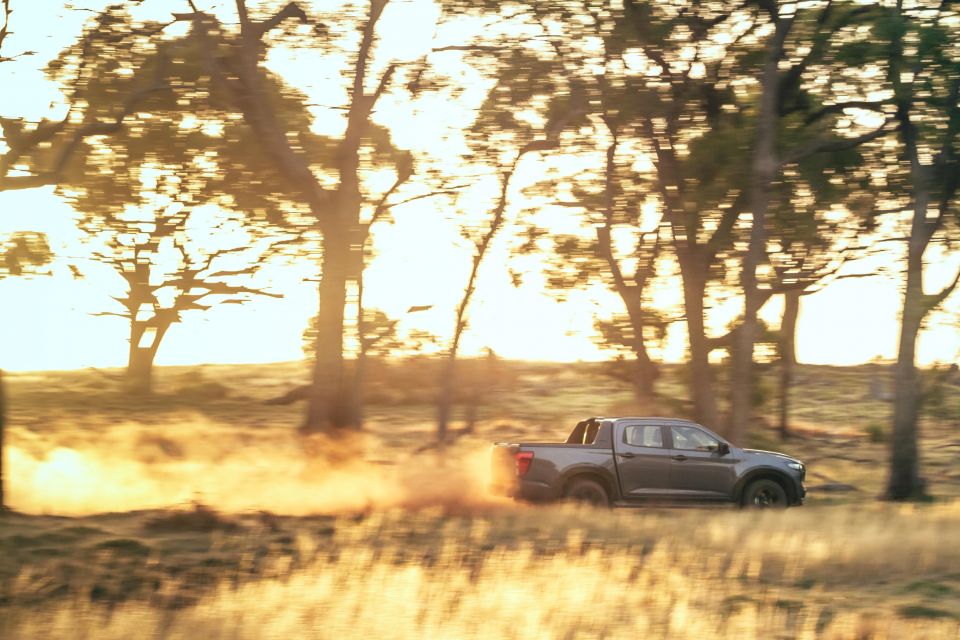
Once you’re back on the road, you can make use of the adaptive cruise control and lane assist systems, both of which are restricted to automatic models.
While some complain about the intrusive nature of the lane centring system, I generally find it works fine. It keeps you in the lane and assists nicely on longer trips – and if you don’t like it you can hold down the steering wheel button to switch it all off like the latest D-Max.
During one section of off-road driving we noticed the forward collision warning was set off a number of times when approaching trees or obstacles, which got quite annoying. Oddly, it only happened when my driving partner was at the wheel, not me.
Standard blind-spot monitoring and rear cross-traffic alert are both handy when piloting such a big vehicle, be it on the Hume or in the Westfield car park.

The BT-50 is covered by Mazda’s five-year, unlimited-kilometre warranty with roadside assistance for the same period.
Servicing is required every 12 months or 15,000 kilometres, whichever comes first. According to Mazda Australia’s service price calculator, the first five visits will cost $421, $394, $679, $500 and $314 for the automatic.
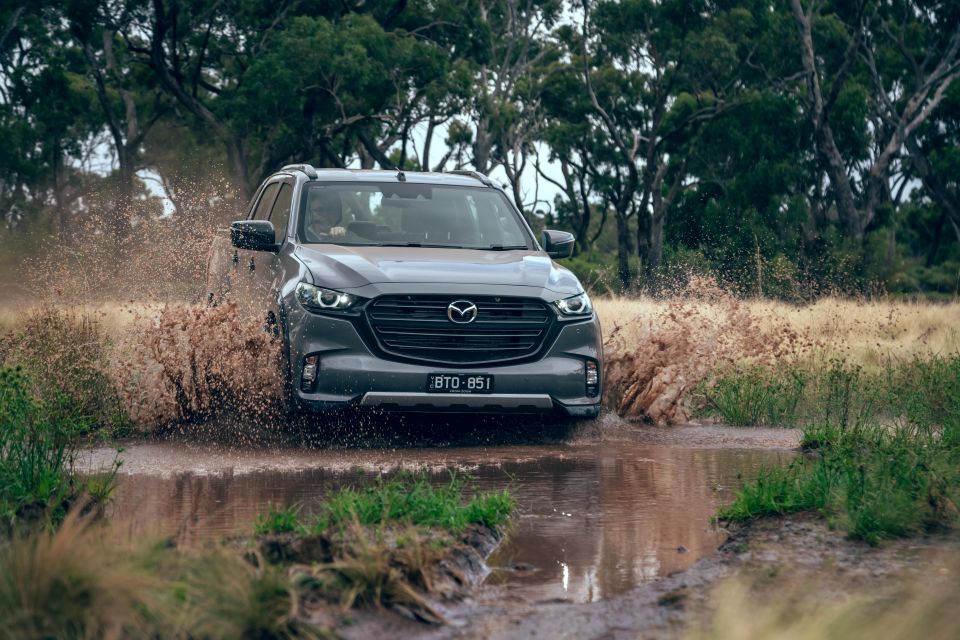
I have gone on record on numerous occasions saying utes aren’t my thing. Historically they’ve been unrefined, under specified, and not made particularly well given their work-focused bloodlines.
But the industry is constantly evolving, and the BT-50 SP proves opting for a high-end dual-cab doesn’t have to come at the cost of comfort or refinement.
It balances premium appointments with rugged ability quite well, and in my opinion it’s one of the better-looking utes on sale.

Like the D-Max, it also comes fully decked out with safety kit and a 2020-stamped five-star ANCAP safety rating that’s still not quite matched by the wider ute segment as yet – though the all-new Ford Ranger looms.
The new BT-50 SP strikes me as something of a spiritual successor to the Mercedes-Benz X-Class in that it appeals to a more comfort and luxury-focused buyer in design and execution. It’s classier to look at than a D-Max, while the interior ambience is up there with a Volkswagen Amarok Ultimate.
In the current ute landscape it’s one of the leaders, but we can’t help but worry the next-generation Ford Ranger will put a lot of rivals to shame when it arrives. Plus, the GT offers much of the same for a few grand less than the SP…

Click the images for the full gallery
MORE: Everything Mazda BT-50
Where expert car reviews meet expert car buying – CarExpert gives you trusted advice, personalised service and real savings on your next new car.
James Wong is an automotive journalist and former PR consultant, recognised among Australia’s most prolific motoring writers.


Ben Zachariah
2 Days Ago


Matt Campbell
2 Days Ago


Derek Fung
6 Days Ago


Damion Smy
9 Days Ago


Ben Zachariah
11 Days Ago


James Wong
17 Days Ago